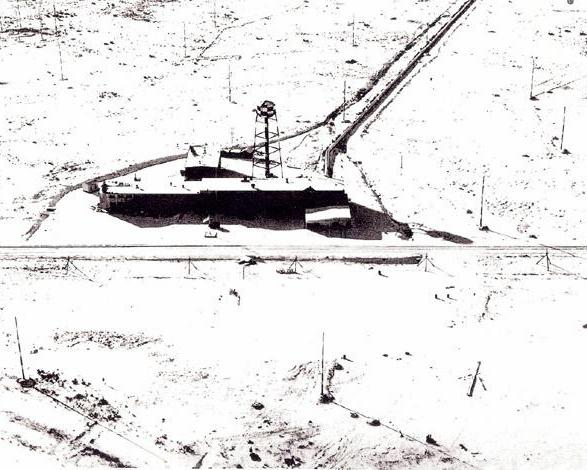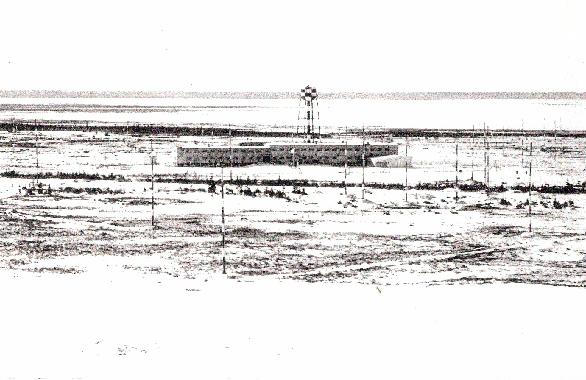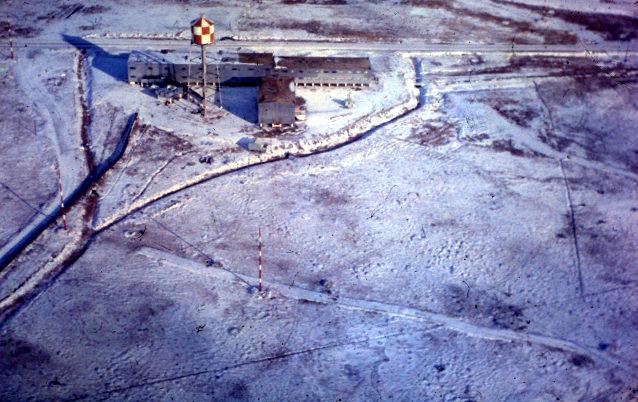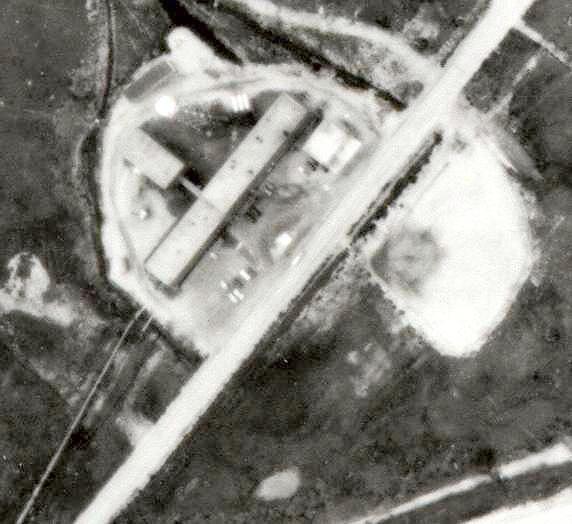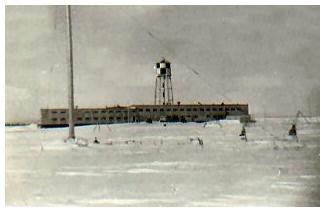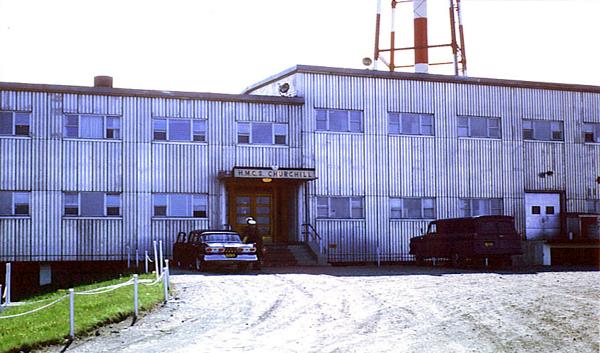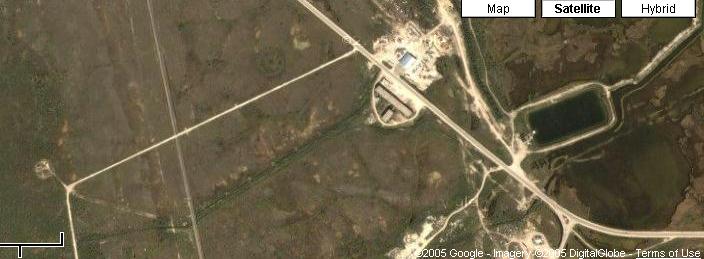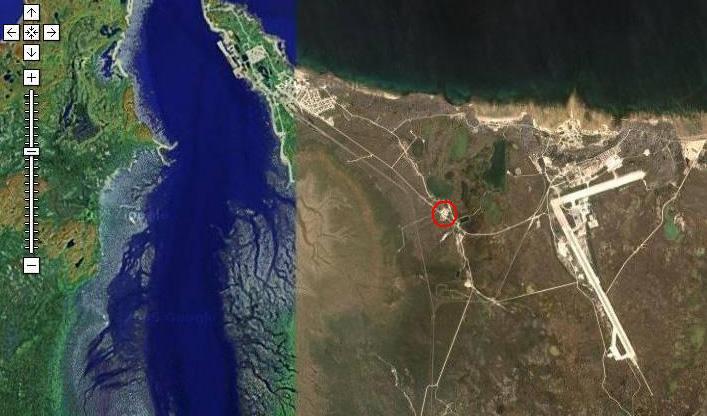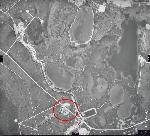 |
1965 Wide Area Overview: HMCS Churchill
and surrounding vicinity taken on August 14, 1965 using a ZEISS RMK 15/23/0
camera at a focal length of 152 mm. The top of the picture points approximately
north and the red circle marks the Operations Building. The middle of the
photo centers on 58° 44 42N, 94° 06 51W.
Rhombic antennas were located in the fields behind the building on both
sides of the operations wing. The fact that the antennas straddled
the road was always a contentious one in those days because vehicles passing
under the wires would generate ignition noise that interfered with reception.
HMC Dockyard Halifax - Antenna Shop was responsible for erecting
the antennas at each station.
(National Air Library Photo #A1951-27) |
 |
1965 Closeup #1:
1.Operations Building. Note the narrow interconnecting passageway between
the buildings.
2. Rhombic antenna arrays consisting of 9 antennas each. The circle
of masts are the feed points for the antennas. Each mast was painted
with 6 red and 5 white rings each.
3. The straight black line emanating from the building was a sewage
pipeline. Those were the days when ecological considerations were just
about non-existent and waste material was dumped into ponds at the end
of the pipeline.
4. This is HFDF shack and the Adcock array for the original CNF-4
installation. In the early 1950's, there was just makeshift path to the
shack which was wide enough for a jeep or 4X4 but usually the operators
walked there. A rail line was situated beyond the DF shack and closer to
the Churchill River but close enough to go give the DF operator an early
morning wake-up call.
5. Baseball diamond. (National Air Library Photo #A1951-27) |
 |
Basic rhombic array. This diagram depicts
the basic 9 antenna rhombic array which was found at Churchill, Coverdale
and other SUPRAD sites.
Adjacent sides of the rhombic "diamond" were attached to a common
mast and were separated by about 8 feet using insulators. At Churchill,
the common mast at point 'A' (typical 9 places) was guyed. Mast 'B'
(typical 9 places) at the tip of the apex was also guyed. In the
rhombic renderings that follow, it is not possible to show this level of
detail. (Image by Jerry Proc) |
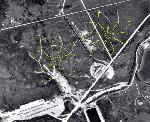 |
1965 Closeup #2 : Rhombic antennas - Two
rhombic arrays have been rendered based on mast shadows observed in the
photo. A third rhombic array was located across the street from the operations
building. See 1965 Closeup #3 for its rendering. (National Air Library
Photo #A1951-26) |
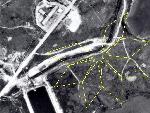 |
1965 Closeup #3 : The rhombic array across
from the Operations Building has been rendered and exactly the way it was
remembered by Chief Omer LeVasseur, This array only had 7 rhombics rather
than the usual nine. In total, there were 25 rhombic antennas at Churchill
with a nominal spacing of 13 degrees. (Edited National Air Library Photo
#A1951-27) |
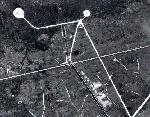 |
DF Sites (1965) : It is known that Churchill
used both the CNF-4 and AN/GRD-501 DF sets.The GRD antenna site, with it's
8 monopoles, is the larger of the two circles. (National Air Library
Photo #A1951-27) |
 |
DF Sites (2005): Both antenna pads are
still evident although one of the access roads seems to have nearly vanished.
(Photo courtesy Google Imagery) |
